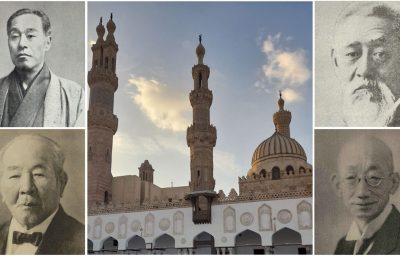COMMUNICATIONS
The Migrant City of London during Covid
Explaining Differentials in Infection and Death Rates
In my capacity as a Visiting Research Scholar at Nichibunken, I have been working on a project to produce an English-language handbook for Japanese studies. The project is entitled What handbook and perspectives are demanded of international research on Japan? I have hosted three research meetings attended by over twenty people. We have enthusiastically debated how to produce a volume that might be consulted for years to come both by people aspiring to do Japanese studies, as well as by people engaged in the study of Japan. Publication is scheduled for three years from now. At the same time, I have been writing a book in English to be published next year. The broad theme is “the cultural translation of corona’s influence on London-resident migrants.” I have also given research presentations on this subject here in Japan.
In the epidemic year of 2020, I received the equivalent of 50 million yen in research funds (AH/V013769/) from the United Kingdom Research and Innovation agency. A team of fifteen of us have been conducting research on the remarkably high infection and death rates in the migrant community of London, the UK’s migrant capital. Indeed, 50% of London’s population is migrants; more than 300 languages are spoken there.
A national survey revealed that many of those who died early in the Covid-19 epidemic were so-called BAME (Black Asian Minority Ethnic) *1 migrants. There were also clear differences in rates of infection and death among BAME migrants depending on their linguistic community. By far the highest death rates were recorded for the Bangladeshi community. It was thought that the corona pandemic attacked everyone “equally,” but judging from the UK case, there were considerable death-rate disparities. In my view, there were several reasons for the disparities. There was the “syndemic” *2 quality of Covid as referred to by Richard Horton, but also the linguistic distinctiveness of different communities, differences in cultural practice and, furthermore, the question of how corona was translated into different languages. So, with fourteen other researchers, I conducted online surveys of, and interviews with, migrant communities in London, including the Japanese-language community. The majority of interviews were conducted in the migrants’ first language, and the interest of this research lies partly in the fact that it has involved multiple translations.
*1 BAME, that is, “Black,” “Asian,” and “Minority Ethnic,” designates non-white ethnic groups. The term is used widely in the UK in the press and in official documentation.
See, for example, the Official website of Mayor of London
*2 Richard Horton has emphasized the greater negative impact of COVID-19 on communities that are disadvantaged socially or economically. He stresses the need to understand COVID-19 not as a virus infection from the perspective of a biological “pandemic,” but from the perspective of a “syndemic,” which demands consideration of the virus and its engagement with social background. Such an understanding, he argues, should inform all countermeasures.
Source: Horton, Richard. “COVID-19 is not a pandemic.” The Lancet, Volume 396, Issue 10255, 874 (2020). https://www.thelancet.com/journals/lancet/article/PIIS0140-6736(20)32000-6/fulltext?s=09




